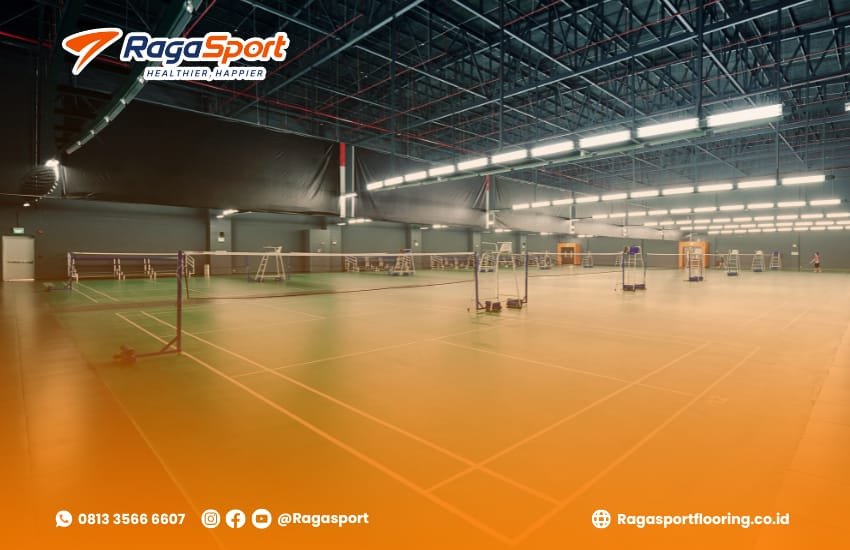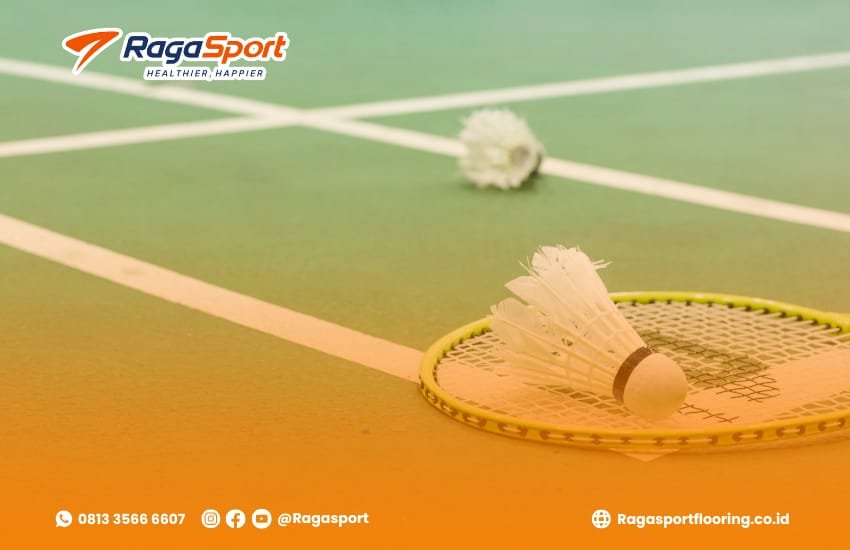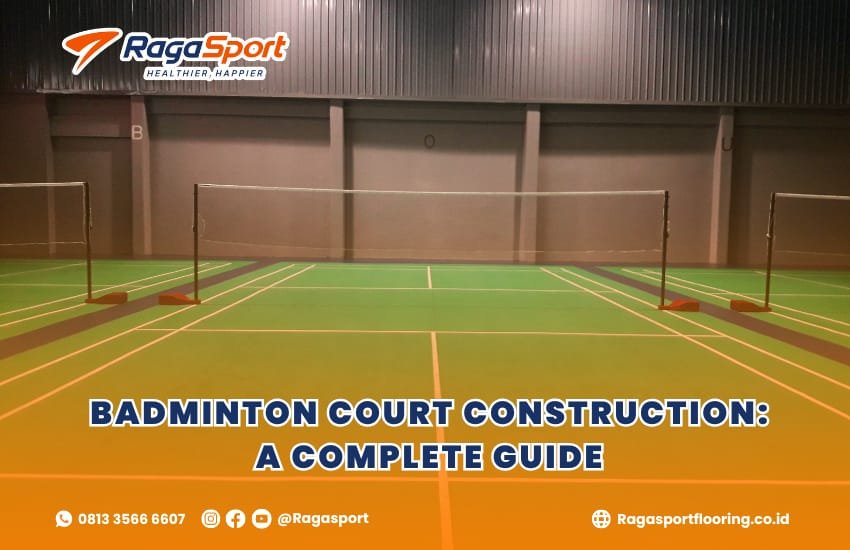Badminton is one of the most popular racket sports in the world, played by millions of people at both recreational and professional levels. To ensure the best playing experience, the quality of the court is just as important as the skills of the players. Badminton court construction requires careful planning, precise measurements, and the use of proper materials to meet international standards.
Whether you are building a court for a sports club, school, or private facility, understanding the essential elements of court construction is crucial. This guide will walk you through every detail, from the court layout to flooring, lighting, and maintenance.
Table of Contents
Standard Dimensions of a Badminton Court
The first step in badminton court construction is ensuring the right size and dimensions according to international guidelines set by the Badminton World Federation (BWF).
- Length: 13.4 meters
- Width (Singles): 5.18 meters
- Width (Doubles): 6.1 meters
- Service Court Length: 3.96 meters
- Net Height: 1.55 meters at the posts, 1.524 meters at the center
Markings should be done with contrasting colors, usually white or yellow, to ensure visibility during play.
Flooring Options for Badminton Courts
Flooring is one of the most critical aspects of badminton court construction. The right surface enhances player safety, reduces injuries, and improves gameplay. Below are the most common types of flooring used:
- Wooden Flooring
- Provides excellent shock absorption.
- Commonly used in professional indoor courts.
- Requires regular polishing and maintenance.
- Synthetic Flooring (PVC or Vinyl)
- Offers consistent bounce and grip.
- Easy to install and maintain.
- Resistant to wear and tear.
- Acrylic Surface
- Suitable for outdoor courts.
- Weather-resistant and durable.
- Provides good traction but less cushioning compared to wood.
- Concrete Flooring
- Low-cost option, often used in community courts.
- Not recommended for professional use due to lack of shock absorption.
For optimal performance, synthetic or wooden flooring is preferred in most modern facilities.
Lighting Requirements

Lighting plays an essential role in ensuring visibility and fairness during matches. Poor lighting can affect gameplay and even cause injuries. Key points to consider:
- Indoor Lighting: Use high-quality LED floodlights with an illumination level of 500–750 lux.
- Uniform Distribution: Avoid shadows by positioning lights at equal angles.
- Outdoor Courts: Ensure weather-resistant lighting systems with proper coverage.
The lighting should be bright but not glaring, allowing players to track the shuttlecock clearly.
Ventilation and Ceiling Height
For indoor badminton court construction, ventilation and ceiling height are critical factors.
- Ceiling Height: Minimum of 9 meters is recommended to allow high shuttlecock trajectories.
- Ventilation: Proper airflow ensures comfort and prevents humidity buildup, which can damage flooring.
- Air Conditioning: In professional arenas, controlled temperature and humidity create an ideal playing environment.
Net and Posts
A badminton court is incomplete without the proper net and post setup.
- Net Material: High-quality nylon or polyester mesh with a dark color for visibility.
- Net Height: 1.55 meters at the posts and 1.524 meters at the center.
- Posts: Sturdy, rust-resistant, and placed exactly on the doubles sidelines.
Outdoor vs Indoor Badminton Courts
When planning badminton court construction, choosing between indoor and outdoor depends on budget, usage, and location.
- Indoor Courts
- Provide consistent playing conditions.
- Protect from wind, rain, and sunlight.
- More suitable for professional matches.
- Outdoor Courts
- Lower construction cost.
- Suitable for community or recreational play.
- Require durable materials to withstand weather conditions.
Maintenance Tips

Proper maintenance ensures the court remains in top condition for years.
- Floor Cleaning: Sweep daily and mop regularly with non-corrosive cleaning agents.
- Net and Posts: Check regularly for tension and wear.
- Lighting Systems: Replace faulty bulbs and clean fixtures to maintain brightness.
- Markings: Repaint lines as they fade over time.
With regular upkeep, a well-built badminton court can last for decades.
Cost Considerations
The cost of badminton court construction varies depending on several factors:
- Type of Flooring: Wooden or synthetic floors cost more than concrete.
- Indoor vs Outdoor: Indoor facilities are more expensive due to roofing and ventilation.
- Location: Costs may vary depending on material availability and labor charges.
On average, constructing a standard badminton court can range from $ 1X,XXX to $5X,XXX depending on specifications.
Conclusion
Constructing a badminton court requires attention to detail, from dimensions and flooring to lighting and ventilation. Whether for recreational or professional purposes, the right construction ensures safety, durability, and an enjoyable playing experience.
If you are planning to build a badminton court with professional standards, it is highly recommended to work with experienced specialists who understand the technical requirements.
Looking to build a high-quality badminton court with international standards?

Our team specializes in sports facility construction to deliver durable and professional courts.
👉 Learn more about our services here
👉 Contact us directly via WhatsApp: wa.me/6281335666607

